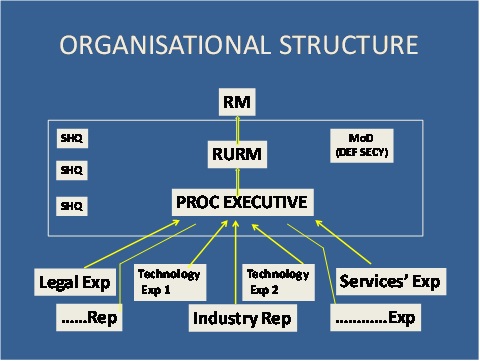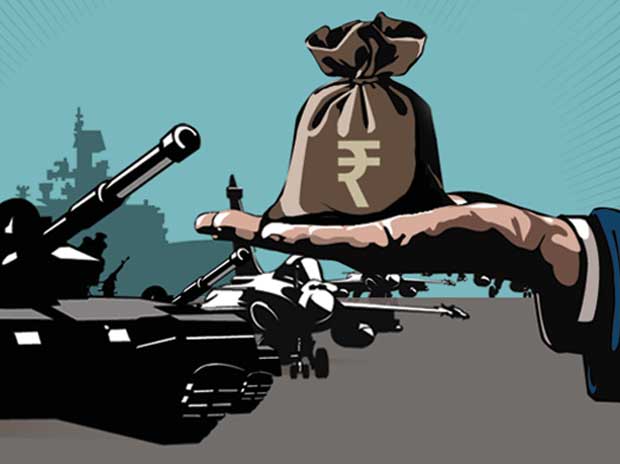Introduction
A few good things are happening on the defence procurement landscape. It is good that the government took its time for the Dhirendra Singh Committee to give its report and incorporated many of its recommendations while framing the Defence Procurement Procedure (DPP) 2016. Some far reaching suggestions have been subjects of other follow-on sub-committees; one of them, the Vivek Rae Committee, has been constituted to look into, possibly the most far reaching recommendation of the Dhirendra Singh panel, viz., the creation of a Procurement Executive (PE) outside the formal structure of the Ministry of Defence (MoD). This writer was privileged to make a presentation to the Committee and this piece encapsulates the views put forth.
Present Procurement Structure
The writings in India on resolving the ills of defence procurement have centred round adopting the models followed by the West, namely, in the US through its Defence Acquisition Corps concept, the Director Generale of Armament (DGA) of France and in the UK model that has its Defence Equipment and Support (DE&S) department. It must be remembered that these nation too have gone through the trials and tribulations that India is facing and their structures have evolved through many Dhirendra Singh and Vivek-Rae type of studies. Thus, while a PE must be placed outside the formal MoD structure, the process must be gradual over five-year phases. This is centered on the reality that India would continue to be an importer of big ticket items for the next 15 years at a minimum and the period must be used to activate the PE to its full potential.
At present, in fact all these past seven decades, who in the Government has been mandated to equip India’s war fighter? If the Government can answer this question, the problem would be solved!! Has it been the Defence Secretary or was it the DG Acquisition? Or have the Service Chiefs, who have no financial and administrative powers, somehow been responsible, for it is they who are most vocal about the deficiencies? Ever heard a non-uniformed government official speaking and ruing the poor state of defence procurement? The fact is that while the Raksha Mantri’s Op Directive tasks the Service Chiefs and Chairman Chiefs Of Staff Committee with specific duties in the defence of the nation, there is no one mandated by law to equip them. So, bureaucrats have come and gone and political parties have formed governments and have been replaced, without any one being held accountable for the deplorable state that India finds itself in. In the countries mentioned earlier, the head of the defence procurement chain is mandated by law to equip the armed forces and he is either a political appointee himself or reports directly to one. The US has the Under Secretary of Defence (Acquisition, Technology & Logistics) cleared by the Congress while in the UK the head of the DE&S is responsible to the Parliament through the Minister of State for Defence. The procurement organization of these countries is the ‘spine’ to which are attached various experts who act as ‘organs’ to keep the system live and receptive. While the experts come for fixed or determined periods of time, depending on the intricacies of a project, it is the ‘spine’ that provides the institutional knowledge, legal and procedural expertise, direction to research and development and the impetus to guide procurements in continuum. So, if the Air Force has to purchase an aircraft, the route followed in India and the other nations is broadly as under.

In India, different agencies push a case file sequentially while abroad the case is taken up by the boss of the procurement agency and pushed through to fruition — in many cases, ‘fruition’ includes in-service use and maintenance till the equipment is phased out.
Proposed Procurement Structure
So, taking a cue from others and moderating it with conditions unique to India, the proposed Indian procurement organization should have the following: –
- The PE should report directly to the Raksha Utpadan Rajya Mantri (RURM) – the Minister of State for Defence Production — and not the Defence Secretary. The RURM would be the political link between the government and the PE, and hence must be appointed in the Union Cabinet.
- The Defence Secretary should look after policies (other than procurement), HR and other matters.
- The PE should have resident and permanent experts of technology, law, contracting, taxation, heavy industry et al – in essence, all who go into conceiving a project and seeing to its termination, working under him. The naysayers would say that it is not possible – it is certainly possible, and is the model with which other countries have progressed.
- Service experts would come to the PE for long duration attachments (minimum five years), depending on the procurement projects underway. Some should be given the option to choose whether they would like to be permanently seconded to the organization. These officers would be assets of immeasurable value and, along with the civilian staff, form the permanent ‘spine’ of the PE.
The link of the Service Headquarters with the PE, while having an omnipresent osmotic connection through the Service experts, would be through the Defence Acquisition Board in which the Defence Secretary would also be a member.

Recommendations
The following recommendations are made: –
- The present structure should not be disturbed abruptly.
- Changes should be introduced in a phased manner – – while no time frame should be mandated but a period not exceeding five years per block is recommended.
- A PE should be nominated for a minimum period of five years, extendable if so felt by the government.
- The PE could be a serving or retired individual, from the Services or otherwise – this implies that he/she could be from the private sector too. A mandatory QR should be that the individual should have experience in defence procurements and not be a generalist, as most civil servants tend to be.
- A skeleton cadre should be formed forthwith and should be progressed as per a set time frame so that an acquisition cadre of acceptable strength is in place by the first five year block.
- Uniformed personnel should be seconded to the acquisition cadre for a minimum period of five years (extendable, depending on the programme); they would be the lead for operational projects and form the vital link to the war fighter.
- The acquisition cadre should be fully in place by the 15 year milestone.
- The process for setting up an institution for imparting acquisition training should start In the interim, ad hoc training courses in different fields should also be commenced immediately at College of Defence Management, Secunderabad, without waiting for the commencement of the setting up of the PE. These trained personnel, both civilian and military, would be the foundation layers of the PE.
Tail piece
In the US, the Defence Acquisition University was born from the ills of what their defense historian, William Gregory, described as the acquisition system being one that had been “managed and over-reformed into impotence with volumes of oversight regulations. He added that the Congress had been pursuing an impossible dream by trying to legislate perfection when, “no regulation could create good management or top-notch people.” Does that ring a bell for us??
The result in the US was the setting up of a permanent Defence Acquisition Corps that ensures continuity ‘from cradle to grave’ of a project. We have no other option but to start the training NOW, while other recommendations are implemented in parallel.
Air Vice Marshal Manmohan Bahadur (Retd)
(The author retired from the IAF as an Air Vice Marshal; he is presently a Distinguished Fellow at the Centre for Air Power Studies, New Delhi. Views are personal).
(Disclaimer: The views and opinions expressed in this article are those of the author and do not necessarily reflect the official policy or position of BharatShakti.in)






















